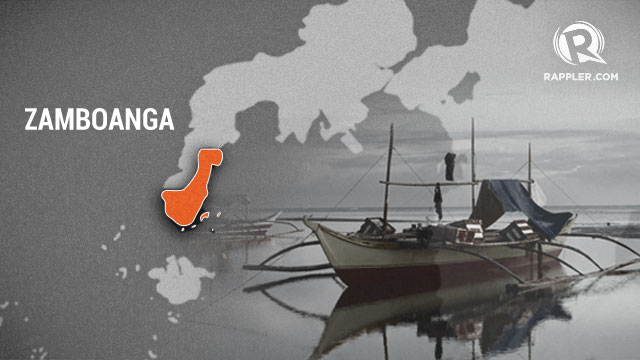From GMA News (Jan 5): Pinoy, 5 other 'terrorists' to be released after 2-year detention in Malaysia
A Filipino suspected of being a member of a terrorist group is to be released this weekend from Taiping in Malaysia, two years after he was arrested and detained.
The Filipino is scheduled for release on Sunday along with five other members of the "terrorist group" Darul Islamiah Sabah, Malaysia's The Star Online reported Saturday.
Home Minister Datuk Seri Dr Ahmad Zahid Hamidi identified the Filipino as Muadz Hakim. The others were identified as Malaysians Adzmi Pindatun, Mohd Nazri Dollah, and Bakar Baba; and Indonesians Darto Bandu and Muhammad Adnan Umar.
According to the report, the six were to be released from the Kemunting Protective Detention Centre in Taiping Sunday.
It added the six had been ordered detained for two years after they were arrested on Nov. 14, 2011.
The report said the six are the last detainees under the Internal Security Act (ISA), which was repealed in 2012.
Following the ISA's repeal, the Prevention of Crime Act was amended to allow a person to be detained without being charged or tried for up to two years.
The detention can be extended for another two years in the interest of public order, security or crime prevention.
http://www.gmanetwork.com/news/story/342491/pinoyabroad/news/pinoy-5-other-terrorists-to-be-released-after-2-year-detention-in-malaysia
On the first day of the program, Chairperson of SWC from different provinces delivered reports on their accomplishments for the year.
This is participated in by different women coming from different provinces across Mindanao, to be particular from Tawi-tawi, Central, Northern and Southern Sulu, Yakan City and Basilan from the island provinces; Zamboanga City, Zamboanga del Sur, Zamboanga Sibugay, Zamboanga del Norte. Lanao del Norte, Lanao del Sur, Maguindanao, North Cotabato, Sultan Kudarat, South Cotabato, Sarangani, Davao del Sur, Davao del Norte/Comval and Davao Oriental.
The second day of the activity was allotted for the messages and statement of MILF key officials.
Chairman Alhaj Murad Ebrahim of the MILF Central Committee is the keynote speaker. He informed the Bangsamoro women of their roles and responsibilities in the Bangsamoro Government. He also emphasized the significant roles of women to the struggle of whole Bangsamoro towards peace and independence. “You’ll be part of the government. Hindi pwedeng walang babae sa gobyerno natin” the Chairman stated.
Further, he informed the Moro women of the special development program intended for women in the Bangsamoro government.
Chairman Murad also gave an update on the signing of the three Annexes, the modalities, wealth sharing and the recent which is the power sharing. He also mentioned of the remaining Annex on Normalization, which accordingly the subject for the next meeting of both panels.
There was also an update on the efforts in making harmony with the Moro National Liberation Front (MNLF). The establishment of the mechanism to see the non-implemented parts of 1996 peace agreement between GPH and MNLF will be incorporated by the transition commission on the Bangsamoro Basic Law.
Aleem Ali Solaiman, the 2nd Vice Chairman of the MILF Central Committee was also one of the speakers. He provided insights on Islamic perspectives. According to him, the only way to achieve lasting peace is to follow the teaching of Islam, the Qur’an and the Hadith of the Prophet Muhammad SAW. He likewise recognized the roles of women by saying: “A good mother produces good children who will be the future Muslim leader”.
Another guest who highlighted the big role of women in the Bangsamoro is Sammy Almansur, Chief of Staff of the Bangsamoro Islamic Armed Forces (BIAF). He explained that the big role of women in establishing the Bangsamoro Government is through the political party participation since women consist the 60% or more of the total population. “To this that women have the power to the winning of the candidates once they participate during elections aside from the most influential member family”, Chief Almansur said.
Joining also this gathering was Mohammad S. Yacob, Executive Director of the Bangsamoro Development Agency (BDA). BDA is the development arm of the MILF.
Director Yacob emphasized on the potential collaboration of the BDA and the SWC on the social work at the grassroots level of the BDA programs and projects, eyeing for MOA signing between BDA and SWC to strengthen the partnership especially on the humanitarian aspect in the very near future.
Mohager Iqbal, Chairman of the MILF Peace Panel at the same time of the Bangsamoro Transition Commission BTC) also provided updates on the activities conducted by the Commission. He informed of the speedy works of BTC after the signing of the recent Annex on Power Sharing.

The activity ended with awarding of prizes for the most outstanding province. Receiving the award is Uza. Halima Hashim who is currently the Chairperson of SWC Ligawasan Province, the sister of the late Chairman Salamat Hashim. Giving the awards is the National Chairperson Uza. Guimila Hussain (right) and National Secretary Engr. Aida Silongan (Left).
http://www.luwaran.com/index.php/welcome/item/752-bangsamoro-women-convene-in-darapanan-for-role-in-governance




